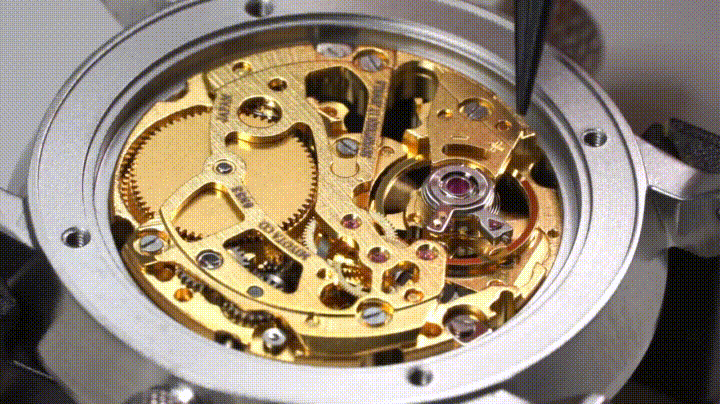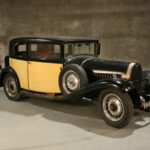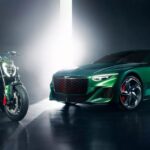|
|
|
Ettore Bugatti founded Automobiles E. Bugatti in 1909 in Molsheim, Alsace, then part of the German Empire, but which became part of France after World War I. |
|
|
|
During this period, Bugatti cars were often referred to by their “Type + number” designation, such as the first prototype Type 10 or the first commercial model Type 13. |
|
|
|
Additionally, these cars could be nicknamed based on their shape, such as the Type 57G “Tank”, or use abbreviations like S (Surbaissé – low-slung) or C (Compresseur – supercharged), as well as various coachbuilders. |
|
|
|
The car’s name came from the initials of the brand’s founder, Ettore Bugatti. 1991 also marked the 110th anniversary of this French entrepreneur of Italian origin. |
|
|
|
In May 1998, the Volkswagen Group acquired the rights to use the Bugatti logo and brand name, Bugatti Automobiles S.A.S. After several different concepts, the Bugatti Veyron EB 16.4 was officially delivered to customers from September 2005. Photo: TNTBros |
|
|
|
The car was named in honor of Pierre Veyron, an engineer, test driver, and racer for Bugatti, who won the 24 Hours of Le Mans in 1939. |
|
|
|
In the Veyron, EB continued to stand for Ettore Bugatti, while 16.4 alluded to the car’s iconic W16 engine and its four turbochargers. |
|
|
|
From 2005 to 2015, Bugatti continuously launched a series of bespoke models named after individuals who played significant roles in the brand’s formation and development. |
|
|
|
In 2016, the Bugatti Chiron was officially introduced. The car still used the W16 engine, now with an output of up to 1,500 horsepower, a significant increase from the Veyron’s standard 1,001 horsepower. Photo: TNTBros |
|
|
|
The car was named after the legendary Monegasque driver Louis Chiron. He was also a test driver and racer for Bugatti, winning the Monaco Grand Prix in 1931 and the French Grand Prix in the same year with the Bugatti T51. |
|
|
|
Previously, his name had also been used for the Bugatti 18/3 Chiron concept, which preceded the brand’s launch of the Veyron. The number 18/3 came from the car’s 18-cylinder engine, divided into three separate compartments. |
|
|
|
Unlike the Veyron, in addition to familiar variants such as the Chiron Sport, Chiron Super Sport 300+, and Chiron Pur Sport, the Bugatti Chiron also served as a platform for the brand to revive its renowned “coachbuilding” heritage. |
|
|
|
The Bugatti Divo debuted at The Quail in 2018, limited to 40 units worldwide, priced from 5.8 million USD. With a completely different exterior, the Divo still used the Chiron’s 1,500-horsepower W16 engine. |
|
|
|
The car’s name came from French driver Albert Divo, who won numerous prestigious titles with Bugatti over a 20-year span, including six Grand Prix victories and two Targa Florio wins. |
|
|
|
Also at The Quail in 2019, Bugatti unveiled the Centodieci. The car’s design was influenced by the legendary Bugatti EB110, particularly its front bumper and small grille, body air intakes, and front and rear lights. |
|
|
|
In Italian, Centodieci means “110”, commemorating the brand’s 110th anniversary. This hypercar was limited to just 10 units, priced at over 10 million USD each. Football superstar Cristiano Ronaldo was also spotted driving this car in Madrid, Spain. |
|
|
|
The Bugatti W16 Mistral marks the farewell to the W16 engine with a displacement of 8.0L. It is also the only convertible variant based on the Bugatti Chiron. |
|
|
|
The design inspiration for the W16 Mistral came from the Type 57 Roadster Grand Raid of 1934, along with many details inherited from the Veyron Barchetta concept of 2008. |
|
|
|
The car’s name was inspired by the cold, dry seasonal wind characteristic of France. With this version, the W16 engine in the W16 Mistral delivers 1,600 horsepower. Only 99 units were produced, priced from 5 million USD each. |
|
|
|
In addition to street-legal models, Bugatti also introduced a track-only model, the Bolide. In French, “Bolide” means “racing car”. |
|
|
|
In contrast to traditional designs, the Bugatti Bolide utilizes the most advanced technologies from the LMDh and F1 racing series. However, the car’s power output is reduced to 1,600 horsepower compared to the 1,850 horsepower announced on the concept. |
|
|
|
The official version was delivered to VIP customers in early 2024. Bugatti produced only 40 units of the Bolide, with a starting price of 4 million Euros. |
|
|
|
One of the most famous designs based on the Chiron is the one-off Bugatti La Voiture Noire. At its debut at the 2019 Geneva Motor Show, it was the world’s most expensive production car, priced at over 9.5 million British pounds. |
|
|
|
In French, “La Voiture Noire” means “the black car”. The design of this car was inspired by the legendary Type 57SC Atlantic. Only four were produced, but the only one with a black exterior, “La Voiture Noire”, mysteriously disappeared during World War II. |
|
|
|
The modern-day Bugatti La Voiture Noire is owned by a member of the Ferdinand Piëch family, who originally commissioned this masterpiece. However, he passed away before the car was completed. |
|
|
|
The Bugatti Tourbillon is the latest addition to the brand’s lineup, succeeding the Bugatti Chiron. Unlike the traditional naming convention, this car is named after the Tourbillon mechanism used in high-end Swiss mechanical watches. |
 |














































